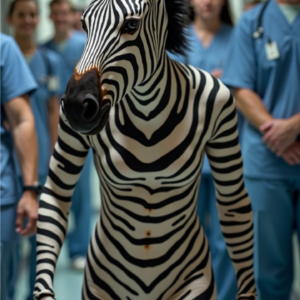- About EDS
- Navigating Healthcare
- Mental & Social Health
- Programs
- Resources
- Patient Stories
- Research Alerts
 A Basic Understanding of Ehlers-Danlos Syndrome (EDS)
A Basic Understanding of Ehlers-Danlos Syndrome (EDS)A plain-language summary of the connective tissue disorder
Ehlers-Danlos Syndrome, or EDS for short, is a group of genetic conditions that affect the connective tissue in the body. Connective tissue is like the glue that holds everything together—your skin, joints, blood vessels, and organs all rely on it to stay strong and work properly.
In people with EDS, this glue is weak or stretchy when it shouldn’t be. That means joints can move too far, skin may be unusually soft or fragile, and blood vessels or organs can be more prone to injury. This isn’t just about being flexible—it’s a medical condition that can affect nearly every system in the body.
Think of connective tissue as the scaffolding or support beams of the body. It’s made up of proteins like collagen that give strength, structure, and flexibility. When these proteins are made incorrectly because of a genetic mutation, the support system weakens—and that leads to the wide range of symptoms seen in EDS and other connective tissue disorders.
In medicine, doctors are taught, “When you hear hoofbeats, think horses—not zebras,” meaning common conditions are more likely than rare ones. But for those of us with Ehlers-Danlos Syndrome and other rare diseases, we are the zebras. We may look fine on the outside, but our symptoms don’t follow the usual rules. The zebra has become our symbol—a reminder that rare isn’t impossible, and that doctors should look beyond the obvious. We wear our stripes with pride.
Joint hypermobility (joints that bend too far or dislocate easily)
Chronic pain or fatigue
Frequent injuries like sprains or subluxations
Fragile skin that bruises or tears easily
Digestive issues, fainting, or dizziness (due to nervous system involvement)
Slow wound healing or stretchy skin (in some types)
Marfan Syndrome – Often affects the heart, eyes, and skeleton. People tend to be tall with long limbs.
Loeys-Dietz Syndrome – Similar to Marfan but with unique vascular features and facial traits.
Stickler Syndrome – Affects joints, eyes, and hearing, often diagnosed in children.
Osteogenesis Imperfecta – Known as “brittle bone disease,” it causes fragile bones and easy fractures.
Cutis Laxa – Causes loose, sagging skin and can affect internal organs.
Hypermobile Spectrum Disorders (HSD) – Similar to the hypermobile type of EDS but doesn’t meet all diagnostic criteria.
These conditions are often misunderstood or misdiagnosed, especially since they can look like anxiety, clumsiness, or general fatigue. Early diagnosis can help people get the right treatments, physical therapy, and support to manage symptoms and improve quality of life.
EDS and related connective tissue disorders are real, often invisible, and deeply impactful. But with the right knowledge, care, and support, people living with these conditions can find ways to manage their health and live well.
Get involved in the movement to help find answers faster through community sharing. #Sharingiscaring

The EDS Joint Effort is the definitive platform for all things Ehlers-Danlos Syndrome (EDS) and related conditions. This expansive repository offers an array of resources, from the latest research to practical guides, all easily searchable living library through our intuitive companion tool. Designed by patients for patients, with contributions from expert providers, and patient advocates, Joint Effort facilitates a seamless exchange of knowledge and support. By connecting insights and empowering our community, we enhance understanding and drive advocacy. We believe through collaboration and sharing information is how we will get through this, together.
The information provided by EDS S.H.A.R.E. and EDS Joint Effort is not medical advice. It is intended for informational purposes only and is not a substitute for professional medical advice, diagnosis, or treatment. Always seek the advice of your physician or other qualified health provider with any questions you may have regarding any medical condition. EDS Joint Effort, its producers, and its contents are not liable for any actions taken based on the information provided, and all users agree to hold harmless EDS Joint Effort and all products, producers from any claims arising from the use of the information provided. This information is not designed to replace a physician’s independent judgment about the appropriateness or risks for a given patient. Always consult your doctor about your medical conditions. EDS S.H.A.R.E. does not provide medical advice, diagnosis or treatment. Use of the site is conditional upon your acceptance of our Terms of Use and Privacy Policy as stated.
Copyright © 2025 EDS Joint Effort. All rights reserved.
























Think of this like a roadmap on surviving EDS. It tells you where to go next, and what you need to know now. It's a GPS system for Zebras! Choose from the links below to learn more...
Cho





